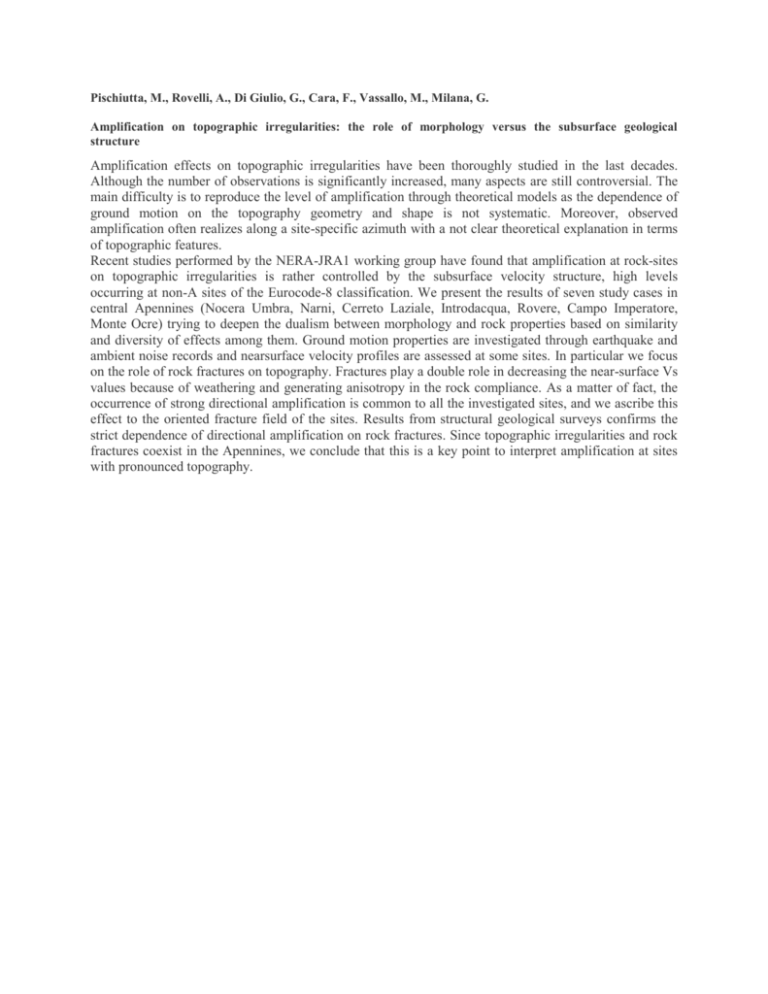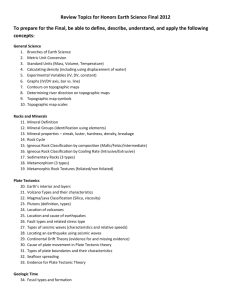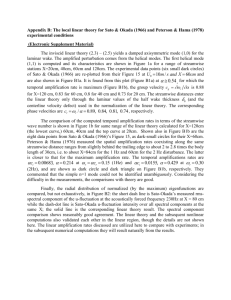View/Open - Earth-Prints Repository
advertisement

Pischiutta, M., Rovelli, A., Di Giulio, G., Cara, F., Vassallo, M., Milana, G. Amplification on topographic irregularities: the role of morphology versus the subsurface geological structure Amplification effects on topographic irregularities have been thoroughly studied in the last decades. Although the number of observations is significantly increased, many aspects are still controversial. The main difficulty is to reproduce the level of amplification through theoretical models as the dependence of ground motion on the topography geometry and shape is not systematic. Moreover, observed amplification often realizes along a site-specific azimuth with a not clear theoretical explanation in terms of topographic features. Recent studies performed by the NERA-JRA1 working group have found that amplification at rock-sites on topographic irregularities is rather controlled by the subsurface velocity structure, high levels occurring at non-A sites of the Eurocode-8 classification. We present the results of seven study cases in central Apennines (Nocera Umbra, Narni, Cerreto Laziale, Introdacqua, Rovere, Campo Imperatore, Monte Ocre) trying to deepen the dualism between morphology and rock properties based on similarity and diversity of effects among them. Ground motion properties are investigated through earthquake and ambient noise records and nearsurface velocity profiles are assessed at some sites. In particular we focus on the role of rock fractures on topography. Fractures play a double role in decreasing the near-surface Vs values because of weathering and generating anisotropy in the rock compliance. As a matter of fact, the occurrence of strong directional amplification is common to all the investigated sites, and we ascribe this effect to the oriented fracture field of the sites. Results from structural geological surveys confirms the strict dependence of directional amplification on rock fractures. Since topographic irregularities and rock fractures coexist in the Apennines, we conclude that this is a key point to interpret amplification at sites with pronounced topography.











